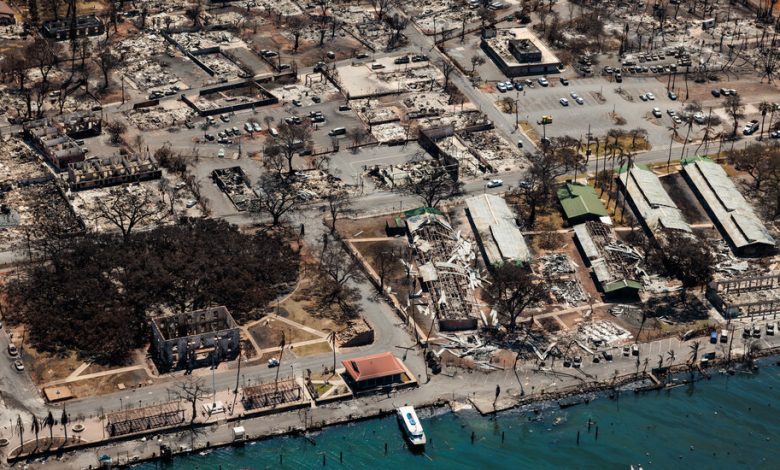FEMA Outlines Maui Wildfire Support as Victims Critique Government Response

The Federal Emergency Management Agency encouraged survivors of the Maui wildfires on Monday to register with the government as soon as possible to receive a range of assistance, including an immediate payment of $700 to cover food and water.
The agency also said it is providing temporary housing in hotels and motels for survivors. And the Small Business Administration said it can provide a low-interest loan of up to $500,000 to homeowners for repairs and up to $2 million to businesses that suffered damage.
For survivors to get those resources, they need to register with FEMA through its smartphone app, on its website, by calling or in person with one of the agency’s disaster assistance personnel on the ground, officials said.
But for the survivors stranded in West Maui without power or internet and little sign of government assistance — local, state or federal — this help seems far out of reach.
“We understand that connectivity is still scarce in some areas,” Deanne Criswell, the FEMA administrator and one of about 300 agency employees on the ground in Hawaii, told reporters on Monday. “The response and recovery efforts, I just want to note, in Hawaii, are going to be a whole-of-government approach.”
Residents in Lahaina, the town destroyed by the wildfires, have complained that the government response has been lacking and that survivors’ crucial needs are going unmet. There are questions about whether wildfire warnings were loud enough and early enough and whether government officials were adequately prepared to deal with the fires.
FEMA is typically the first agency to face intense scrutiny after disasters. It is most often associated with its role responding to hurricanes, particularly because of its history of bungled reactions to previous disasters. Of note are Hurricane Andrew, which slammed Florida in 1992; Hurricane Katrina, which led to catastrophic flooding New Orleans in 2005; and Hurricane Maria in 2017, which wrought destruction across the entire island of Puerto Rico.
While the federal agency plays a critical role in disaster response, it is not meant to be the first on the scene.
FEMA’s mission is to support states in responding to disasters, which it does through infusions of funding, expert advice and marshaling resources, including troops, ships, planes and other assets that the Defense Department can provide.
But FEMA cannot provide direct assistance to survivors or public assistance to the state to help for rescue and recovery operations until the state requests a disaster declaration from the president. In Hawaii, that request came on Thursday, two days after the wildfires began.
And wildfires, in general, devastate communities at a much faster pace than other major disasters.
“Wildfires behave in erratic ways, and they can spread much more quickly than emergency managers have an ability to control,” said Alice Hill, a senior disaster preparedness official who worked in several positions during the Obama administration, including as a member of the White House climate team.
Getting emergency resources anywhere in the Pacific region is a challenge because the islands are so far from the contiguous United States. And the town of Lahaina is even more isolated, on Maui’s edge.
“Frankly, an event like this occurring so quickly is probably a new experience for almost everyone who goes through it,” Ms. Hill said.
After Hurricane Maria, FEMA realized how difficult it was to get supplies to Puerto Rico, and officials examined the agency’s preparedness for remote islands in the Pacific.
FEMA has a warehouse of supplies in Oahu, and as of Monday morning, there were 3.8 million meals, more than 3.6 million liters of water and more than 50 emergency generators there, according to the agency’s operation brief. Some 50,000 more meals, 7,500 liters of water, 5,000 cots and 10,000 blankets were being provided in Maui, the agency said, and there were six shelters open in the county. The fires have killed at least 99 people.
By Monday afternoon, more than 3,000 people had registered with FEMA for federal assistance, said Jeremy Greenberg, the director of the agency’s operations division, and about 60 FEMA officials were working near the shelters to help with registrations.
Eric Schmitt contributed reporting.



